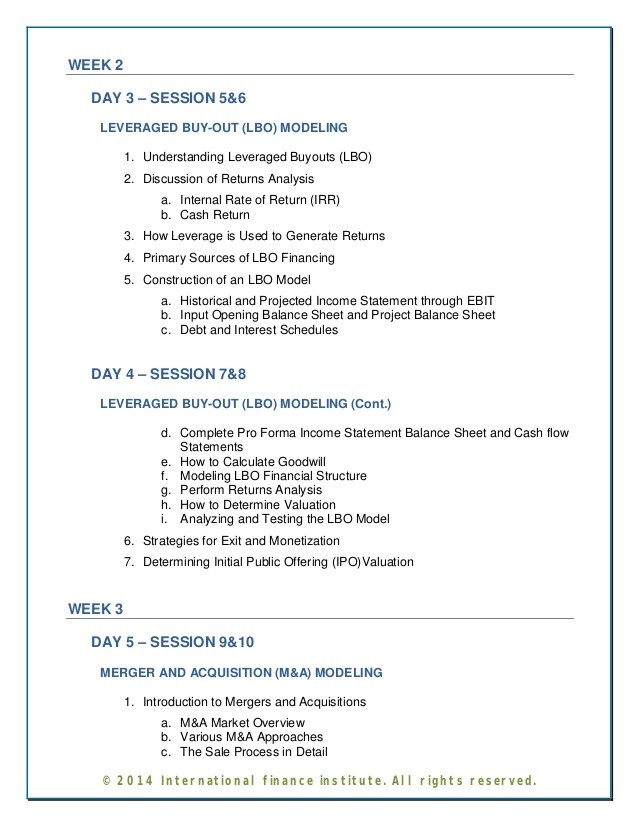Investment Banking 101 Introduction to Leveraged Buyouts
Post on: 12 Июнь, 2015 No Comment

Friday, February 18, 2011
Introduction to Leveraged Buyouts
As venture capital invests in emerging companies, leveraged buyouts invest in established, underperforming companies. The most common scenario is a private equity fund, the merchant bank division of an investment bank or the target company’s management buying a publicly traded company. The company is taken off the markets and becomes private. Since the initial investment (cash or equity) is usually low, its assets and cash flow are used to finance the transaction. Financing is a combination of equity and debt with 40% to 60% being senior debt, 20% — 30% being mezzanine debt and 20% — 40% being equity.
The private equity fund has a general partner that makes the investments and several limited partners that are the investors. The investments are usually reviewed in the first five years of the partnership. The partnership normally lasts ten years. As the fund exits its investment companies, the investors receive their profits.

So, how does a private equity firm turn a company that is an unattractive investment to one that everyone wants to buy? They can improve operating efficiency, create an entrepreneurial mindset, streamline companies, build up companies and turnaround companies. Improving operations means that there is closer oversight of the company and improved management. The approach for creating an entrepreneurial mindset is to allow management to improve the company or carve out a subsidiary to follow its own agenda. Streamlining and building up companies are strategies that are the opposite of each other. The streamlining strategy means to concentrate on a firm’s core businesses while the building up involves combining several companies. The hope is that the whole is greater than the sum of the parts. Turnarounds take underperforming companies into outperforming companies. In each of the strategies, the private equity fund will have members on the board of directors of the target company. They will help the board in running the company more efficiently. Taking the firm private allows the company to concentrate on its business rather than focusing on making quarterly projected earnings per share demanded of a public company.
In venture capital, the investor cashes in on the company through an initial public offering or a sale to another company. For leveraged buyouts, the same exit strategies are used. Additionally, the company can have another leverage buyout, a straight refinancing or sell it to another private equity firm. In both the second buyout and straight refinancing, the company adds more debt in order to reward company management or the equity holders a dividend.














